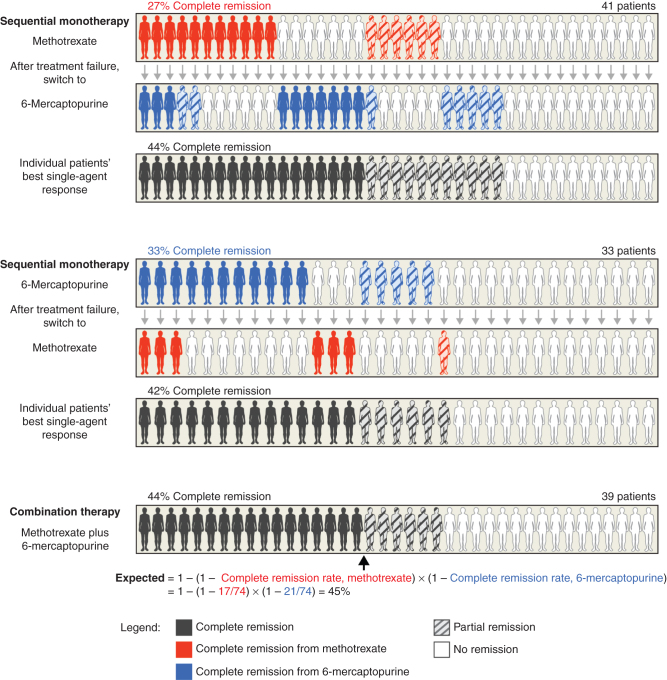Figure 1.
The earliest clinical trials of combination cancer therapy found that therapeutic benefit was due to independent drug action. Clinical trials of drug combinations for ALL repeatedly observed that a model of independent drug action could accurately explain the superior remission rates achieved by drug combinations (45, 56). In this example from 1961, trial arms evaluating sequential monotherapy found that MTX and 6MP were not cross-resistant (no correlation in response), and that the proportion of patients experiencing a complete remission was identical whether the drugs were given sequentially or concurrently in a combination. Furthermore, the complete remission rate of the combination therapy was consistent with that expected from independent drug action.

